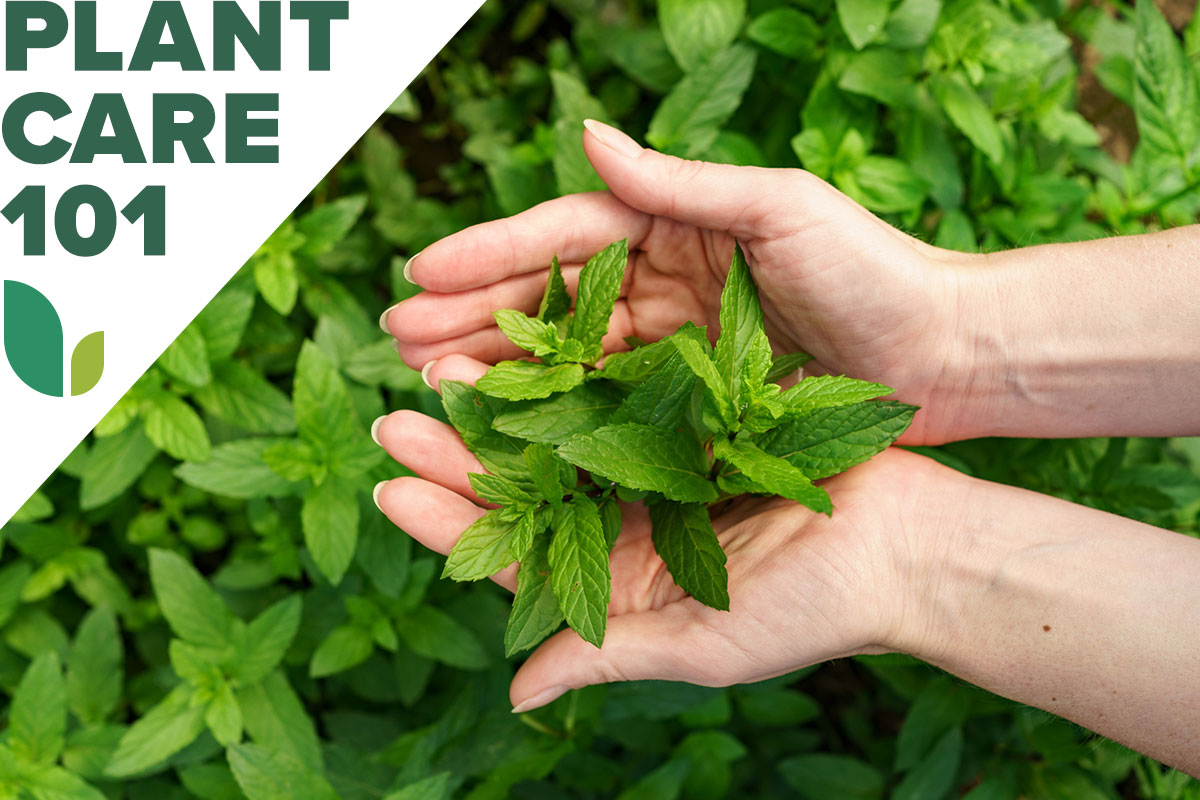

We may earn revenue from the products available on this page and participate in affiliate programs. Learn More ›
Much loved for their refreshing scent and flavor, mint plants are vigorous and far from picky herbs, and are hardy in most zones. However, the invasive perennial herbs are almost too easy to grow as they spread rapidly via underground runners and might run roughshod over the rest of your garden.
You still can raise mint as long as you keep the plants confined to containers or to locations—such as orchards—where they won’t bother the much taller plants around them. A large part of learning how to grow mint is learning how not to grow too much of it.
RELATED: 15 Plants to Grow for a Pest-Proof Yard
Growing Mint at a Glance
Common Name: Mint
Scientific Name: Mentha spp.
Hardiness Zone: Varies from 3 to 10
Soil: Light, moist, slightly acidic
Light: Full sun, partial shade
Water: High
Food: Organic water-soluble fertilizer
Propagation: Cuttings, division, seeds
Safety: Most safe in moderation
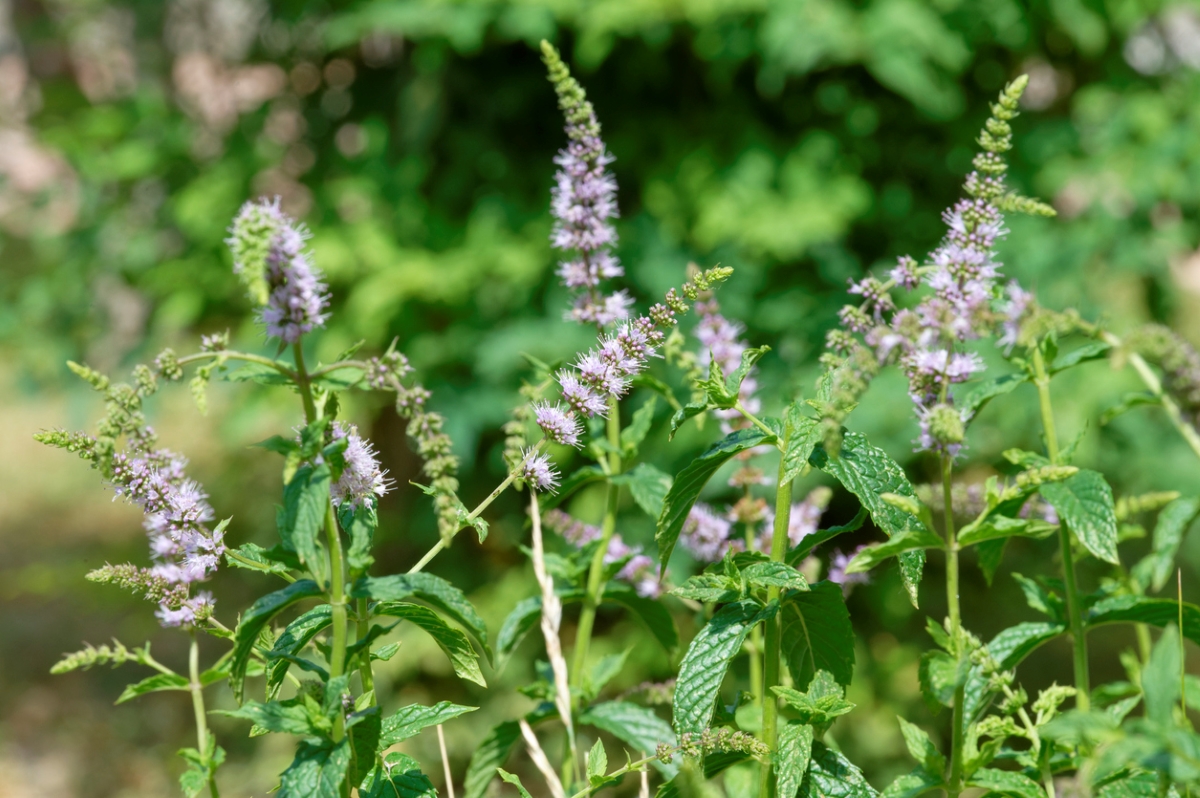
Mint Plant Characteristics
The common mint types like peppermint, spearmint, and apple mint can reach 3 feet high under ideal conditions, with square stems and scented saw-toothed, quilted-looking leaves. The plants produce 1- to 3-inch spikes of small four-petal flowers in shades of lilac, pink, or white.
Spreading via underground runners called stolons, the low-maintenance plants typically die back during winter in USDA Zones lower than 8 and reappear in spring. Their hardiness varies from Zones 3 to 9 for spearmint to Zones 5 to 9 for peppermint and apple mint.
Recommended Mint Varieties
- Peppermint (Mentha x piperita): A cross between spearmint and watermint, peppermint has dark green leaves tinged with purple as well as lilac flowers and a sharp flavor. Its forms include orange mint (M. × piperita f. citrata) and chocolate mint (M. × piperita f. citrata ‘Chocolate’).
- Spearmint (M. spicata): Its leaves usually smaller and sweeter than those of peppermint, spearmint has pink flowers and a larger-leaved cultivar called Kentucky Colonel.
- Apple mint (M. suaveolens): Less hardy than the previous two mints, this apple-scented variety offers gray-green rounder and fuzzier leaves and white flowers tinged with purple. Its cultivars include the variegated and pineapple-scented M. suaveolens ‘Variegata’.
Planting Mint
When moving seedlings or greenhouse plants outdoors, always harden them off for a couple of weeks before setting them in the ground.
When is the best time to plant mint?
Because mint is a perennial herb, it will withstand some frost and can be set out in early spring. However, many sources recommend waiting until after the last spring frost to transplant it into the garden. In either case, when growing herbs outdoors, make sure that the ground has dried out enough to be crumbly rather than sticky.
Where can mint grow?
When growing mint plants, choose a location with light, and moderately rich soil that has some added compost and drains well. That site can be either in full sun or partial shade in the North but should receive only morning sun followed by afternoon shade in the South. If you are growing mint indoors in your indoor garden instead, give it the equivalent of at least 5 hours of sunlight per day (14 hours of LED or fluorescent illumination from a grow light).
How do you plant mint?
Set out mint seedlings or purchased plants when they are 3 to 4 inches tall.
- Dig a hole large enough to contain the plant’s root ball, place the roots in the hole, and backfill soil around them.
- If you have more than one mint plant, set them 12 inches apart
- When using containers, cover the drainage holes with a couple of layers of landscape fabric to prevent roots escaping and place a single plant in the center of each 12-inch-diameter pot.
Can you grow mint in containers?
Growing mint in pots, either above-ground ones or those that have been sunk into the ground, is a good idea to prevent the herbs’ runners from encroaching on other plants’ space. Use clay (or terra-cotta) pots at least 12 inches tall or chimney flue liners for in-ground planting. The container should protrude 2 inches above the ground after being set in it.
Watering Mint Plants
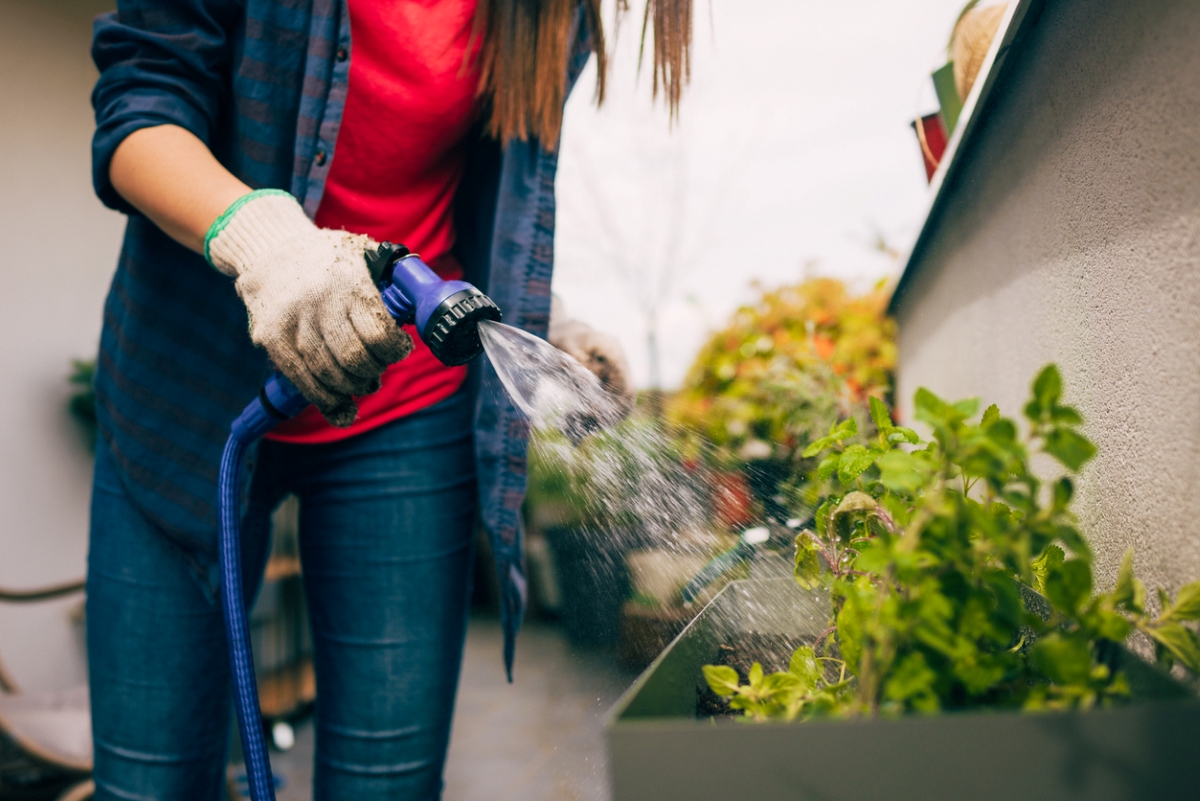
Mints are not drought-tolerant plants and require at least an inch of rainwater per week or its equivalent. The herbs prefer soil that remains slightly moist but not soggy. Although some mints will grow in even wetter ground, they are more likely to develop fungal diseases there than they would under better mint growing conditions. When raising the herb in a pot, you might need to water it as often as once per day during summer.
Fertilizing Mint
If setting your mint plants directly into the ground, work an inch or so of compost into the soil first to lighten it and help provide nutrition. Feed mint with a water-soluble organic fertilizer intended for edible plants, such as 9-4-12, once in spring and once again in early summer following the directions on the label.
As the University of Connecticut notes “Herbs are most flavorful when grown on the lean side so do not over-fertilize them. Excess fertilizer will promote lush green growth with little flavor.”
Pruning Mint
When starting mints indoors from seed, begin pinching off the leaves at the tips of the seedlings early to make them branch out. Once they are planted in the garden, if you see buds on the plants but don’t plan to use your mint leaves right away, cut them back to within 1 inch of the ground just before they flower.
Preventing bloom is an important part of mint maintenance, as flowering results in inferior flavor. When growing mint in pots, cut back any runners dangling over the sides if you don’t want them rooting in the ground beneath those containers.
RELATED: How to Dry Herbs
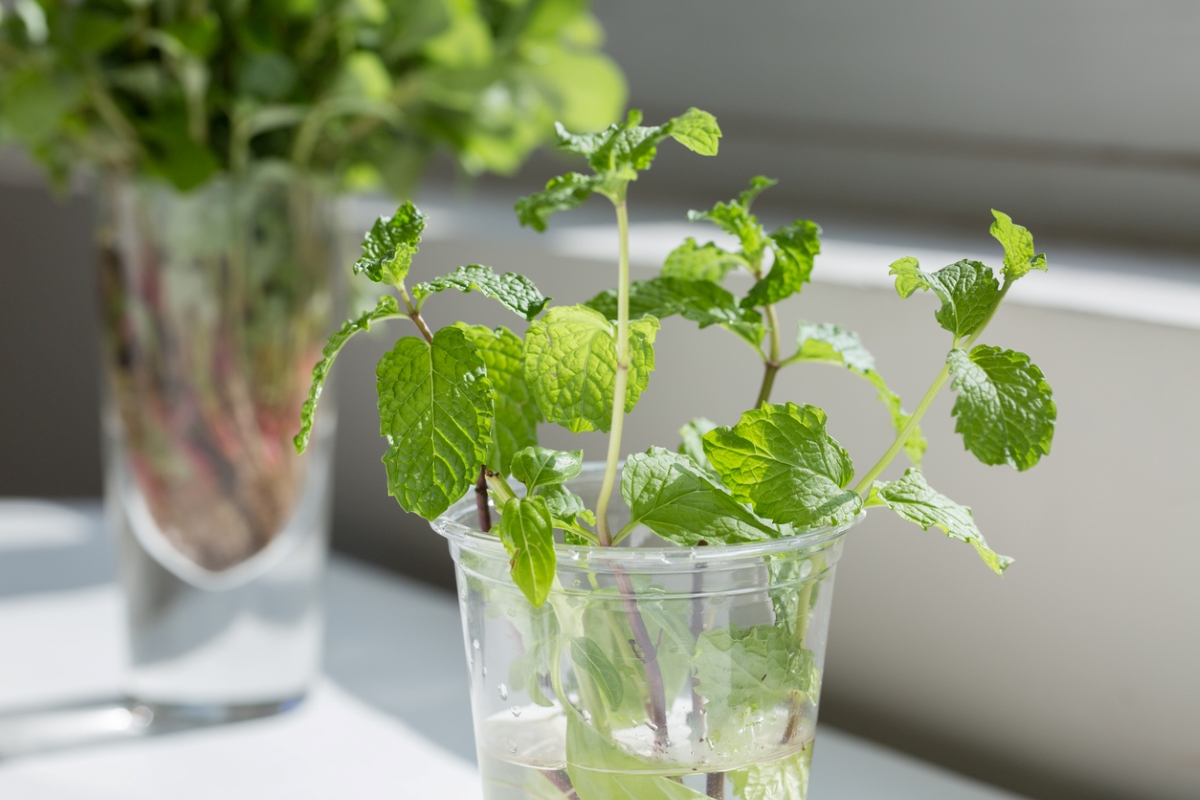
Propagating Mint Plants
Because peppermint is a hybrid, it won’t come true from seed. Therefore, if you want to propagate it, divide your plants in spring or early autumn. Alternatively, root 3-inch cuttings in a glass of water on your windowsill. Remove their lower leaves first so that none of the foliage is beneath the surface of the water.
To sow species mints, scatter the seeds over the surface of damp seed starting mix and press them into the surface. Then place them in a cool, bright location, between 55 and 65 degrees Fahrenheit, until they germinate in 10 days or so.
Safety Considerations
When eaten in large amounts, mint can cause vomiting and diarrhea in dogs, cats, and horses. And, although the herb has been shown to improve digestion in some people, it may cause heartburn in those with gastroesophageal reflux disease.
Mint oils such as menthol and pennyroyal oil are highly toxic and should never be consumed. And, because even pennyroyal tea has caused deaths in infants, it’s probably best to avoid any consumption whatsoever of that particular mint.
Potential Pests and Diseases
Mint plants may be infected by mint rust, a fungal disease that causes a “pox” of orange, yellow, or brown spots on the underside of the foliage as well as distorted new growth. If you want to try to save an infected plant, dig it up, remove the affected foliage and dip its roots in hot water (111 degrees Fahrenheit) for 10 minutes before cooling and replanting it. Otherwise, dispose of the “rusty” plants to prevent the disease from spreading.
RELATED: You’re Probably Harvesting Your Herbs Wrong—Here’s How to Do it Correctly for Maximum Yield
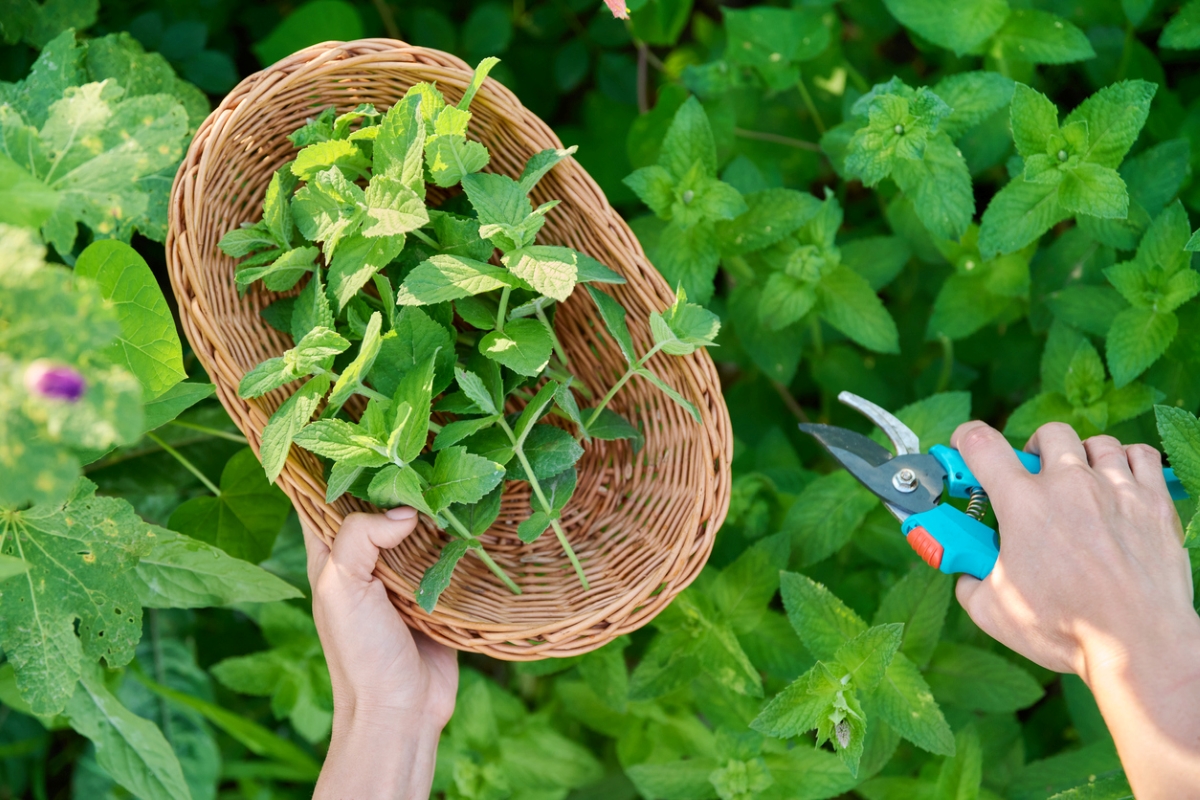
Harvesting Mint
You can garnish summer drinks with fresh mint sprigs or dry them for tea—but first you have to get them off of the plant and ready to consume. Here’s everything you need to know to harvest your mature mint plants.
When is the best time to harvest mint?
You can begin harvesting mint once it is at least 3 to 4 inches tall but, for the most intense flavor, wait until just before it blooms. “Pick” it in the morning of a sunny day after the dew has dried but avoid leaving any of the cut herb lying in the sun.
How do you harvest mint?
Use clean pruning shears or a sharp garden knife to harvest the herb.
- Cut the mint stalk back to within 1 inch of the ground.
- Keep green sprigs for up to a week in the refrigerator with the lower part of their stems in water or freeze some in ice cubes to add to drinks later.
- Because soft-leafed herbs should be dried quickly, use a dehydrator to complete the job in 1 to 4 hours.
How do you store mint?
Dried mint will be ready to store once it feels crumbly. The National Center for Home Food Preservation recommends that you “Place herbs in airtight containers and store in a cool, dry, dark area to protect color and fragrance.” Dried mint generally should be used within a year after it is harvested.
Looking for more plants with scented foliage? Check out our guides on growing basil, citronella, and lemongrass.
